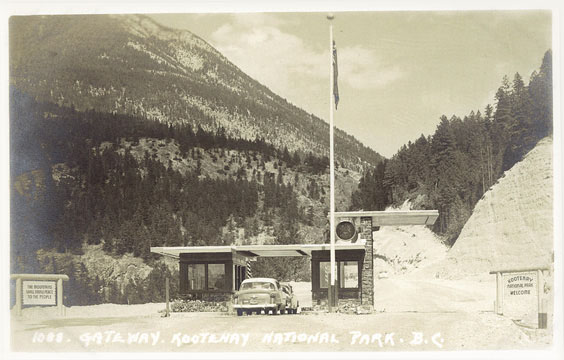HISTORY
Prior to the mid 1800’s, the Kootenay Indians were thought to have used the Vermilion Pass (BC/Alberta border) and River Valley as a route for visiting, and for trading their prized Vermilion-colored paint. The paint was discovered at the Ochre Beds (paint pots), which is only 15 km north of the lodge.
In 1858, Dr. James Hector explored the area in search of a route through the Rockies. He recommended the Canadian Pacific Railway (CPR) lay its tracks over the gradual Vermilion Pass. However, for reasons unknown but likely political, the much steeper and dangerous Kicking Horse Pass (discovered by Hector) was chosen.
The final section was completed under-budget and ahead of schedule by the fall of 1922. It officially opened on June 30, 1923, as the “Banff-Windermere Highway”. This highway became the first motor road to traverse the Central Rockies and thus, the continental divide in Canada. In addition, it was the last link in the “Great Circle Tour”, a road which was approximately 5000 miles long, embracing the beauty of 16 National Parks in the U.S. and Canada. It was one of the many wilderness lodges owned by the CPR at the time and has been used since then to attract tourists from all over the world to the beautiful Canadian Rockies.

Around 1912, a CPR engineer Robert Bruce proposed to build an all weather road from Calgary, through Banff and over Vermilion Pass to Windermere, B.C. By 1914, the Calgary to Vermilion Pass zone was completed as expected. A deal was struck that the Dominion (federal), Alberta and B.C. governments would share the cost of building the road. However, B.C. experienced an economic downfall due to the outbreak of World War I. Not discouraged, Mr. Bruce suggested that the Dominion agree to complete the remaining 60 mile stretch of road in return for B.C. conveying 5 miles on either side to the Dominion as a National Park. Therefore, on April 21, 1920, Kootenay National Park was born.

CONTACT
778.357.9959
kplinfo@kootenayparklodge.com
778.357.9959
kplinfo@kootenayparklodge.com
ADDRESS
9500 HWY 93 South, Vermilion Crossing,
BC, Canada, V0A 1E0
9500 HWY 93 South, Vermilion Crossing,
BC, Canada, V0A 1E0
To Send us an email please use the form below. All fields are required.
